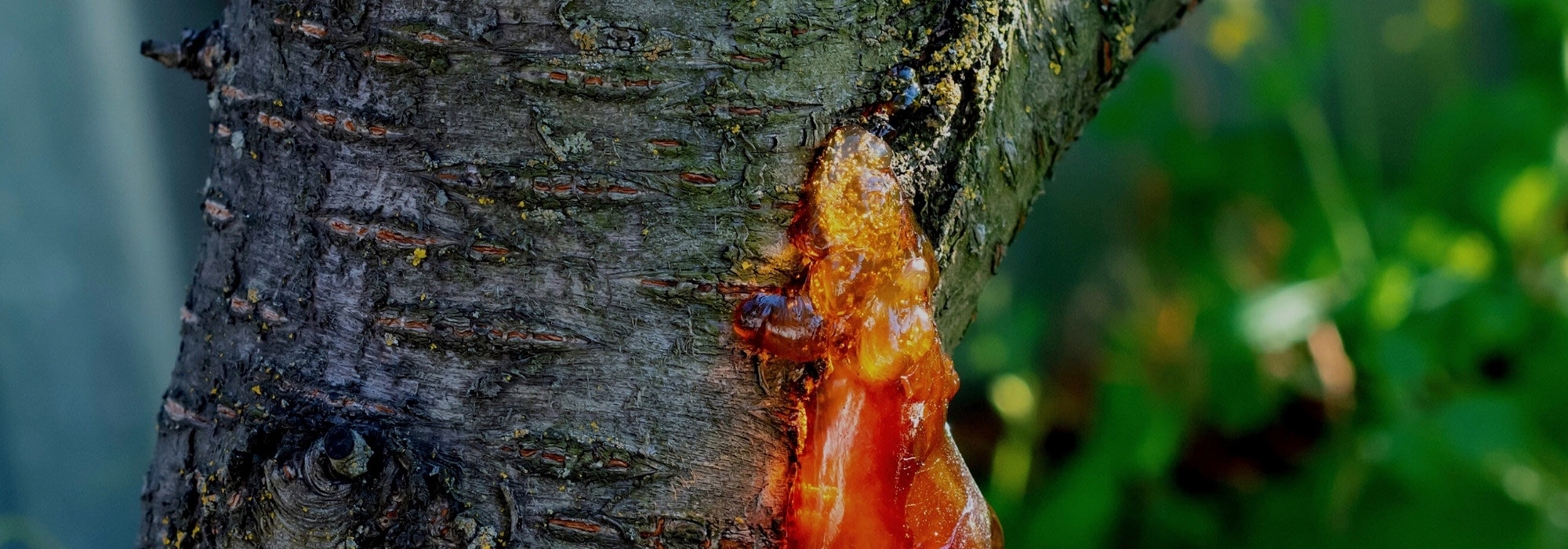
Gummosis in stone fruit trees
Identification, Prevention and Treatment
Contents
You may have already noticed a strange, thick, translucent substance on the trunk or branch of one of your trees? This means it is affected by gummosis, a phenomenon that mainly concerns stone fruit trees. Thus, we commonly see gummosis in cherry trees or apricot trees.
Discover what lies behind gummosis: why does it appear, how to prevent it, and how to treat an affected tree? We explain everything and give you the keys to caring for your trees!
Gummosis: What Is It?
Gummosis is not strictly speaking a disease, but rather a defence mechanism created by the tree. It is characterised by the oozing of an exudate that appears on the bark of the tree. This phenomenon can be caused by injuries, fungal infections or unfavourable environmental conditions. Early recognition of this condition is crucial for the tree’s health and productivity.
The most affected trees are stone fruit trees, particularly cherry, apricot, peach and plum trees… Citrus trees are also sometimes affected. These are mainly trees of the Prunus and Citrus genera.
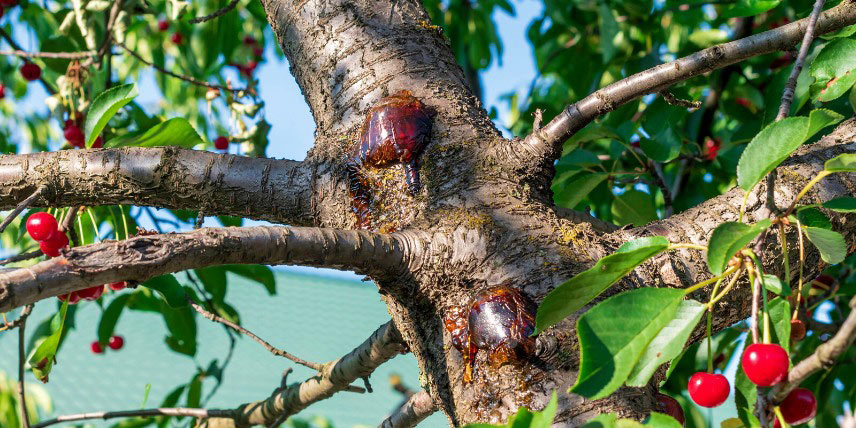
Cherry trees are among the most frequently affected by gummosis.
Read also
Liming fruit treesWhat are the symptoms of gummosis?
Gummosis in Cherry Trees, Apricot Trees and Other Fruit Trees is easily recognisable: a thick, sticky amber-coloured substance oozes from the trunk or branches of the tree. The tree appears to be losing sap. In reality, the production of this substance is the tree’s defence mechanism against external damage, such as wounds caused by wind, thin hail or frost, or a parasitic attack. In the affected area, the bark or branch tends to become necrotic, swollen and turn brown… The tree may also show signs of weakness, such as slowed growth and reduced fruit production. In severe cases, the bark may crack, exposing the tree to secondary infections. It is essential to be vigilant for these signs in order to act promptly.
What are the natural treatments?
To combat gummosis, several natural treatments are effective. First and foremost, it is recommended to maintain good hygiene around the tree, by removing plant debris that could encourage infections. Spraying with Bordeaux mixture, a natural fungicidal treatment, can be applied to prevent and treat fungal infections. It is also important to avoid unnecessary wounds to the tree during pruning.
Gummosis appears following a wound, which may have a natural cause (a branch broken by strong winds, bark cracking due to hail or frost…) or be caused by tree pruning (a poorly healed wound…). Bacteria or fungi can then attack the tree by entering through this wound and multiplying beneath the bark. The tree then defends itself by thickening its tissues, which causes the bark to burst and leads to the oozing of gum. Do not remove the gum, as it is part of the tree’s defence mechanism.
If you notice the tree is weakened, with the tips of the shoots wilting or the leaves turning yellow, it is likely a parasitic attack caused by a fungus or bacterium: phytophthora, pseudomonas, moniliosis, shot hole disease, canker… Watch for other characteristic signs of these diseases and treat them appropriately.
We also recommend applying a poultice to the wound, made from clay mixed with Bordeaux mixture, for its fungicidal properties.
If gummosis occurs on a small branch, you can simply cut the branch, apply Bordeaux mixture, and then use a healing sealant.
Gummosis is also encouraged by overly heavy or impermeable soil with poor drainage, or by excessive nitrogen fertilisers, which promote rapid growth and weaken the bark. Ensure your soil is sufficiently well-drained and avoid excessive nitrogen applications.
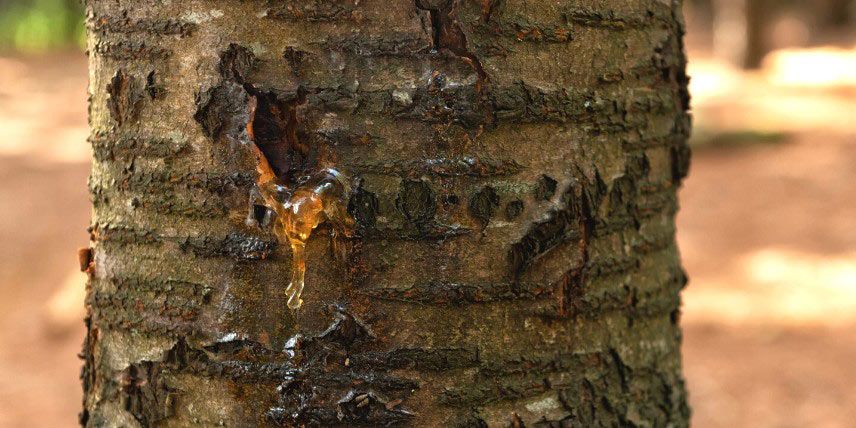
Gummosis typically appears at the site of a wound
Read also
Canker of trees and fruit treesHow to prevent the appearance of gummosis?
Preventing gummosis involves caring for the tree throughout its growth. Ensuring adequate watering, avoiding injuries during pruning, and maintaining well-drained soil are key measures. Regular applications of compost or organic fertiliser can strengthen the tree’s resistance. Additionally, regular monitoring helps detect early signs of the disease and allows for prompt intervention.
- From the outset, it is important to cultivate a variety suited to the climate and terrain.
- Heavy soils and stagnant moisture encourage gummosis. If your soil tends to retain water, improve drainage at planting time by adding coarse sand, gravel, well-rotted compost, etc. Also, consider planting on a mound or the higher part of your land, as water often pools in lower areas.
- Avoid overwatering.
- Plant your tree in a location sheltered from strong winds.
- Avoid severe pruning, especially in stone fruit trees.
- When pruning, do so in autumn, making light cuts with disinfected tools. Tend to pruning wounds by applying healing paste.
- Similarly, if you notice a broken branch, prune it cleanly and apply paste.
- Avoid excessive nitrogen fertilisers but occasionally add well-rotted compost or manure.
- Regularly inspect your trees for early signs of gummosis.
- In autumn and late winter, apply lime to the trunk. Also known as “arboricultural whitewash,” lime disinfects the trunk, sanitises trees, and prevents the development of diseases and pests.
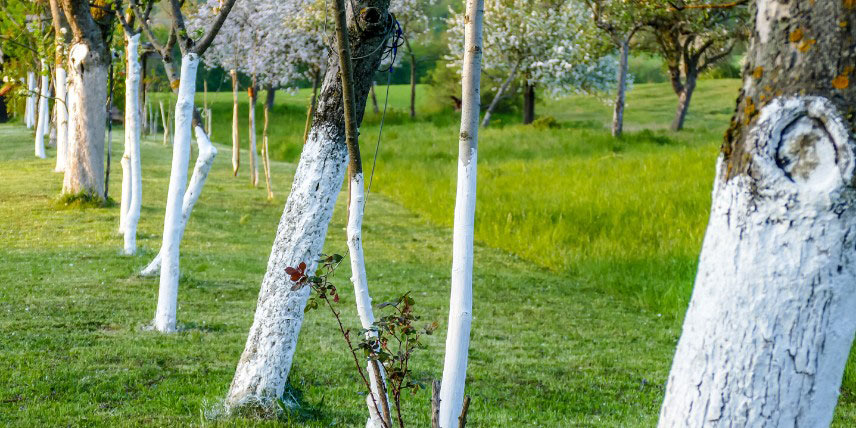
Lime washing trees helps prevent the onset of gummosis
- Subscribe!
- Contents
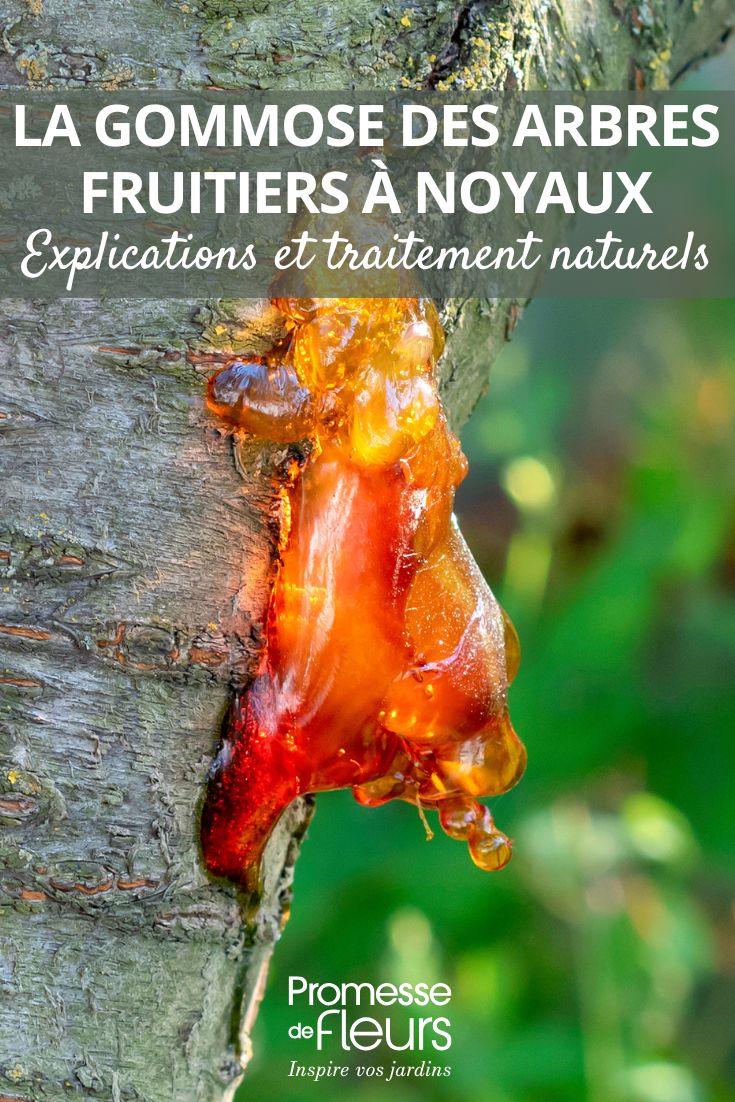































Comments